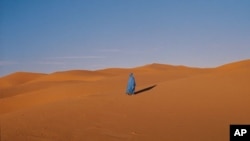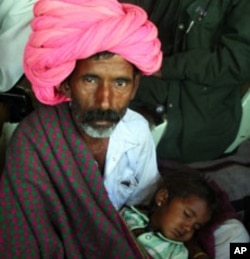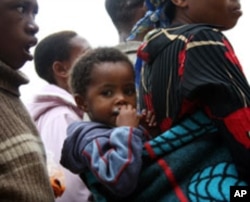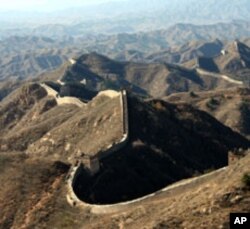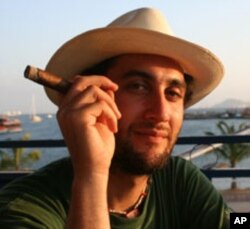A new collection of photographs inspired by one of the most popular photo exhibitions ever mounted is now on display at the University of Southern California's Annenberg School for Communication. "The Family of Man" debuted in 1955 at the Metropolitan Museum of Art in New York City before touring more than 38 nations.
When photographer Edward Steichen unveiled the original collection of 508 photographs he intended it to convey both the human condition and the universality of mankind.
Nick Cull, a professor of public diplomacy at USC, says that Steichen's exhibit, with its intimate portraits of people around the world, drew huge crowds as it travelled from country to country.
"Part of its success was that everybody could recognize something of themselves in the exhibit and so "The Family of Man" show belonged to everybody," he explains.
Smaller collection documents daily lives
Now, a smaller, modern version of the famed 1955 exhibition called "The 21st Century Family of Man" is on display at USC.
"It really came together as a reimagining of the original family of man exhibit and trying to take the most famous photography exhibit and trying to give a modern spin to it," says Paul Rockower, the 29-year-old USC graduate student whose 70 photographs make up the exhibit. Rockower has travelled and studied abroad since he was a teenager, taking pictures of people, places and landscapes.
"The 21st Century Family of Man" shows people going about their daily lives, as well as the structures and cities that showcase human creativity. A man clad in bright blue walks across a desert landscape, surrounded only by sand and his shadow. In a photo from Jerusalem, men covered in prayer shawls pray in front of the Western Wall, while the Great Wall of China snakes across an aerial shot in a section of the exhibit called "Wonders of Man".
Children feature prominently
Like Steichen's exhibit, this collection is divided into thematic sections. Along with "Wonders of Man," there are "Cities of Man," "Faith of Man" and "Terrain of Man." Children feature prominently in two other areas: "Family of Man" and "Children of Man."
"My favorite subjects to photograph are children," says Rockower, "because they always carry such energy with them, they're always such engaging subjects and they're always willing to let you snap their photo."
In India, Rockower focused his lens on a man nestling a sleeping boy in his robes. In another photo, a mother carries a child strapped to her back. In the "Children of Man" display, a Cambodian youth peers out from beneath a large conical woven hat which shields him from the sun and a Tibetan child holds a glass of yak butter tea towards the viewer.
In rich and textured hues, Rockower says his photographs show a common theme amid all the diversity.
"I think the theme that comes out in all of these photographs is really the unity of mankind, that we are all the same, the things that we all share are things like family, like faith, like friendship. These are things that are universal qualities found everywhere you go," he says.
Fostering communication and highlighting beauty
Like the original family of man exhibition, the 21st century show also fosters communication across cultures, says Professor Nick Cull. "You see a little bit of the world through someone else's eyes and you catch a moment in somebody's life. And there are some beautiful pictures, especially the pictures of parents and children together, that are very moving, and you immediately identify with the people in the picture irrespective of their culture or their nationality."
Rockower hopes his interpretation of this shared humanity will offer a beautiful counterpoint to what he says is the ugliness that often makes headlines. And he hopes this exhibition encourages viewers to get out and see the places in his photographs for themselves.
"I've been very blessed with the opportunity I had," says Rockower. "And I'm trying to share that world I've seen and hopefully spur more people on to see the world and show them that it's really a fantastic, beautiful colorful world out there and it's really something everyone needs to experience on their own."
Rockower is working towards his master's degree in public diplomacy at the University of Southern California. He wants to explore and share more of this world when he graduates. He has been to 45 countries so far, and hopes to visit five more before he turns 30 next year.




